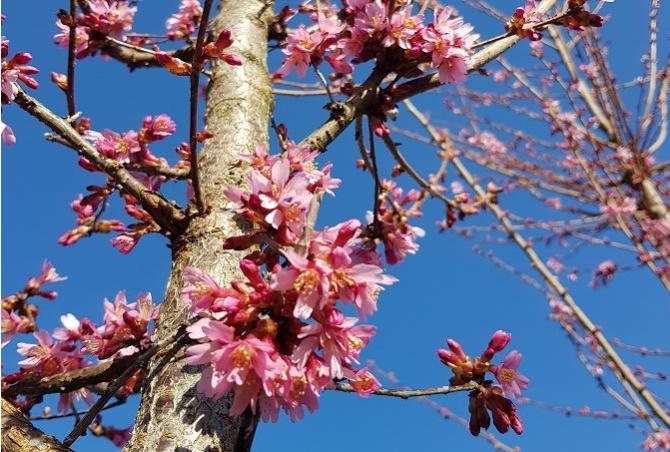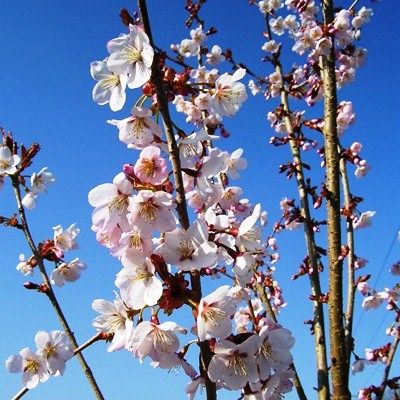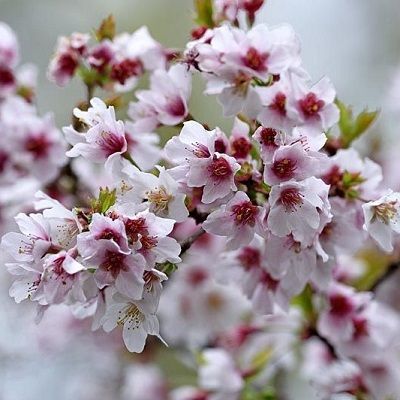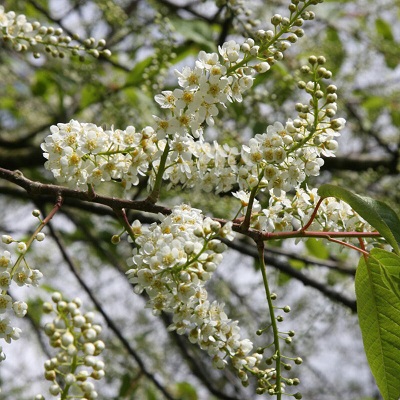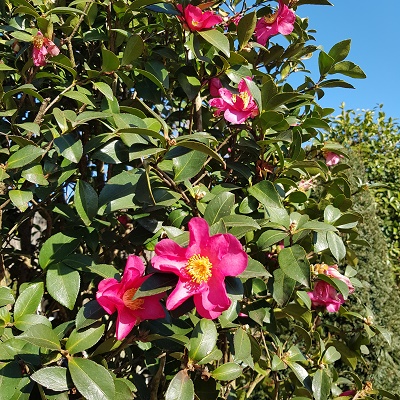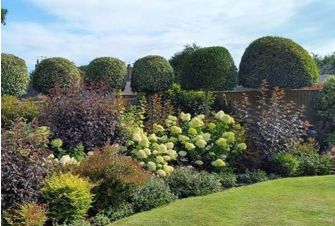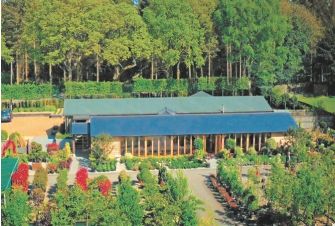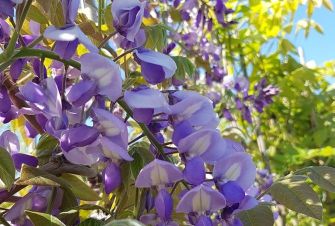Spring blossom is emerging
There's blossom on one of the earliest-flowering ornamental cherry trees here at English Woodlands in Cross in Hand, near Heathfield, East Sussex, even in mid-February! It's Prunus 'Okame', one of the most popular cherries. Not without good reason: it produces masses of candyfloss-pink, single flowers which are loved by bees as well as humans! The blossom appears before the leaves, which will be toothed and green. This is a great tree for many different seasons as later in the year the foliage will turn orange and red in autumn.
Online customers at English Woodlands can use the coupon LOVETREES throughout February 2023 to gain 10% off every tree ordered from the website.
Prunus ornamental cherries are one of the favourite sights of spring. They are an easy tree to please, with something suitable for most gardens, even for a large pot.
Prunus Pandora, for example (pictured above), is a delightful small tree that grows to only around 6m. It produces charming, pale pink blossom in early spring, usually towards the end of March or during April. Once again, those wonderful single flowers are simply the best for bees who desperately need a source of nectar early in the year. Use coupon code LOVETREES during February 2023 to gain 10% off your tree purchase.
If it's a tiny tree for a pot that you are seeking, consider the charms of Prunus 'Kojo-no-mai', pictured above. It grows to a height and spread of only around 2.5m. This means you can even move it around from season to season. The flowers burst forth in April and May. What's more, it has the most intriguing stem pattern of zig-zags!
Ideally, your spring garden will provide you with lasting interest throughout all seasons. It's always a good idea to have trees and shrubs that flower at different times during the year. Try Prunus padus (pictured above), for late spring flowers, produced in glorious racemes during May. The flowers will often cover the entire tree of the 'bird cherry', which can be expected to grow to a height of up to 12m. This valuable wildlife tree is known for attracting bees, insects, birds, butterflies and moths.
For something completely different for the late winter garden, don't forget the joys that Camelllia provide. This evergreen beauty can flower even when it's snowing. What's more, the glossy leaves bring pleasure throughout the entire year. Particularly eye-catching during February is the unusual Camellia sasangua 'Kanjiro', with cerise flowers looking resplendent against the azure sky.
There are many more shrubs and trees about to burst into life here at English Woodlands, and we invite you to come and see! There is always a member of our knowledgeable team ready to help, should you require any advice and guidance.
Please note: home delivery is available across the UK for smaller sizes of trees. Larger trees can be delivered throughout many areas of the South East of England.
English Woodlands expresses sympathy to those affected by earthquakes
Following the major natural disaster of earthquakes in Turkey and Syria, English Woodlands would like to express deep sorrow and sympathy for those affected. The company has donated £2,000 to the DEC Turkey and Syria Earthquake Appeal. The Government is matching this donation, which will therefore increase to £4,000.
Did you know?
Scientists are researching the use of trees to help reduce the impact of earthquakes. It has already been shown that some seismic waves (known as Love waves) can be diverted when they move through a mature forest. Larger trees can act as metamaterial, which can often be used to steer or scatter the seismic waves. Ideally, the waves would be sent downwards, into the soil Trees often remain intact after an earthquake. It is believed that even small groups of trees could mitigate damage caused by seismic activity because their roots can help to scatter the force, releasing some of the energy upwards through the tree tops. Experts now recommend planting trees around buildings within areas prone to earthquakes as they can help to prevent the collapse of structures. This is the main cause of injury and death during these tragedies.
We are extremely fortunate here in the UK that seismic hazard is low. English Woodlands does not advocate the planting of trees too close to buildings. We do, however, need trees for many more reasons, not least the beneficial effect they can have on physical and mental health. Use the voucher code LOVETREES during February 2023 to gain 10% off!

